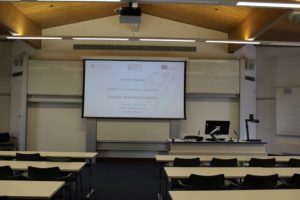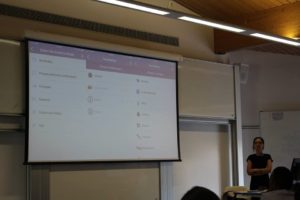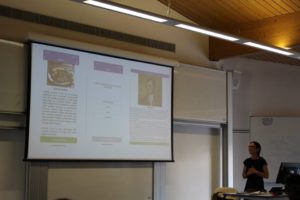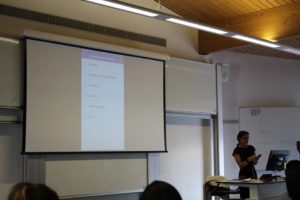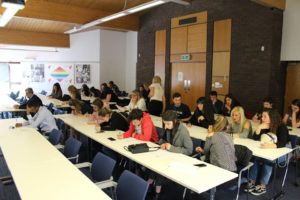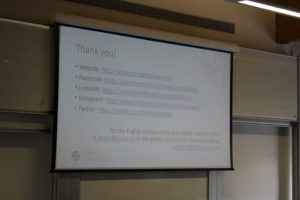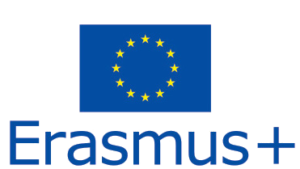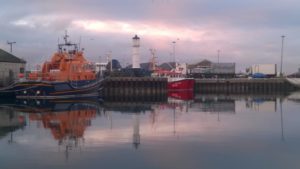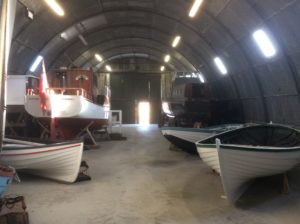Supporting deaf female victims of domestic, sexual and gender-based violence
By Jemina Napier & Lucy Clark
See link to this blogpost in British Sign Language (BSL):
Following on from our last v/blogpost, in this v/blogpost Jemina Napier and Lucy Clark from the SIGNS@HWU team in the Centre of Translation & Interpreting Studies in Scotland (CTISS) at Heriot-Watt University provide an update on what they have been doing as part of the Justisigns 2 project.
The wider project focuses on how to support victims and survivors from deaf and migrant communities with their experiences of domestic, sexual and gender-based violence (DSGBV), with a view to understanding best practices for key professionals (i.e., police, health and social) and interpreters working together to ensure access to support. The Heriot-Watt University team are focusing on support for deaf women specifically.
Below is a translation of the blogpost presented in BSL.
JEMINA: We’re back! It’s been some time since our last blogpost, which we did in 2021 when Lucy first started work on the project. So we’re here to give you an update of what we’ve been doing with the Justisigns 2 project.
Firstly, we administered two surveys – one to service providers who provide support to women that have reported incidents of DSGBV, and one to interpreters (of all languages) about their experiences of working in this context. We have analysed those results, and they will be published later. The results are interesting because it seems that both service providers and interpreters feel they need more training about how to work together. So, the service providers want to know how best to work with interpreters, for example, how to identify if they’re qualified and if they’ve had any specialist training around DSGBV situations; and the interpreters said that they felt they didn’t understand the terminology, the jargon…
LUCY: Yes, that is right, how to sign things or how to explain certain things and that perhaps one word could have different definitions in the DSGBV context.
JEMINA: So, the interpreters said that they also would like training. Fortunately, one of the goals of the Justisigns 2 project is develop training resources for interpreters and support service providers, and we’re working on that at the moment. I will hand back to Lucy to tell you about other things we’ve done.
LUCY: We held an event back in March 2022 for International Women’s Day. It was so nice, a very successful event that was well attended by many older deaf women. This was interesting as it helped us to think about what the younger generation think about DSGBV issues too. We provided small workshops, for example, training on safety and well-being, how to look after your health, for people have experienced abuse how to report it and how to engage in self-care has part of your recovery. We also had presentations from the police, who gave information about how to report incidences of DSGBV and everyone seemed to really get a lot out of it. It was a very relaxed environment which made it conducive to talking about this specific sensitive issue, and serveral people asked us for more events. We delivered a webinar. Unfortunately I was sick and couldn’t attend, so over to Jemina to tell you how that went.
JEMINA: The webinar was aimed at interpreters to share the survey results and the training needs identified through the survey. I think there were about 70 interpreters that attended from all over the UK and internationally. A lot of the discussion was about how much interpreters would really like to get access to specialist training on this topic.
We will also be doing some other presentations coming up for Police Scotland and for the Policing Domestic Abuse Research Network about the survey results and be the deaf perspective on this topic.
Last year (in 2021), we also had a roundtable with deaf Independent Domestic Violence Advisors (IDVAs) and interpreters to talk about their roles, what is important to include in training, what they need in their respective roles and how best to work together, which was very useful. From all of these different events, we identified that we need to develop some kind of glossary in BSL. So, Lucy went about researching key terms…
LUCY: Yes, it was important to identify key terminology as we realised that perhaps people might think it means one thing but there could be other meanings and especially in relation to the DSGBV context. We used our networks to get support to identify important terminology and did some research into what these terms mean. By developing a BSL glossary of these terms, it will support many deaf people that might not be familiar with these terms.
JEMINA: Also, this glossary will be helpful for interpreters if they find themselves working in this situation, then they will be able to do some research and preparation using the BSL glossary.
At the end of last year (2021), we held an initial workshop on Zoom between deaf and hearing interpreters and support service professionals who have experience of working in DSGBV contexts to begin to discuss these glossary terms. But we agreed that it would be more productive to proceed with a face-to-face workshop. So, we are hosting approximately 15 people in Edinburgh in May 2022, including representatives from Police Scotland, to discuss about these terms, whether there are established signs or the best ways to sign them. And then we will re-film and make the BSL glossary freely available through our website for both deaf people and for interpreters.
LUCY: It is really nice to see the involvement from Police Scotland because obviously the police are often the first point of contact so we can work with them to identify gaps in knowledge, for example, if deaf people want to report incidences, so we can try and make sure that the process is as smooth as possible: for interpreters so they know how to interpret the jargon, that the police understand about deaf culture and that deaf women know how to ask for help from the police. It feels good to know our project will make this difference.
We have also interviewed several deaf women and we are in the process of summarising and identifying the key themes that have emerged from those interviews. The interviews did not focus on DSGBV incidents themselves, but on what happened once they had reported an incident of violence, for example: Did they get the right kind of support? Could they find an interpreter? Were they directed to the right services? How did they communicate? And so on. We really wanted to tap into those experiences, and from that data we will be able to create some recommendations for the police and other support services about the best way to support deaf women in these contexts and to understand from the beginning to the end of the process, what information needs to be given.
JEMINA: In addition to creating a summary and writing up the data, we are also planning to make a mini-documentary to illustrate the experiences of deaf women. We will bring in actors so that we can keep our interviewees anonymous and protect their identities. But we think it’s important that the deaf community are able to see this information in BSL and hopefully, this documentary could also make an impact on hearing organisations about the experiences of deaf women.
So, we’ve been busy!
LUCY: We have been really enjoying the work. If any of you have any questions or if any of you want to know more, please do contact us (Email: L.Clark@hw.ac.uk/ Twittter: @JUSTISIGNS2) so it can feed into our research on this topic.
JEMINA: And we will be back with another update later on in the project. Thank you.
Transcribed by https://otter.ai



